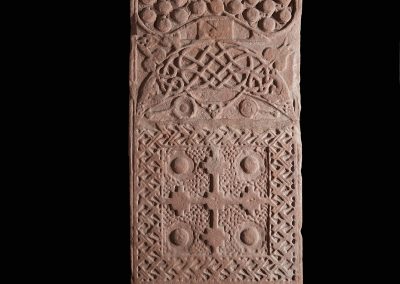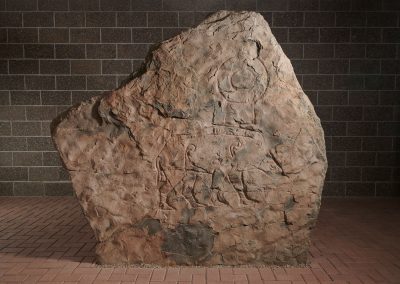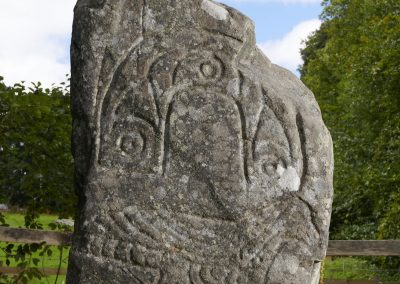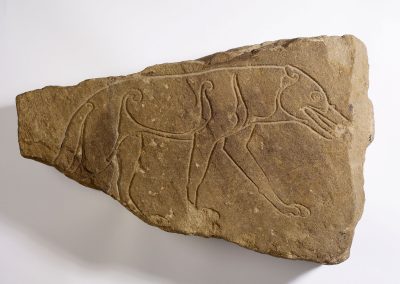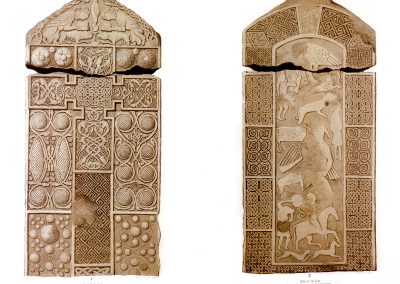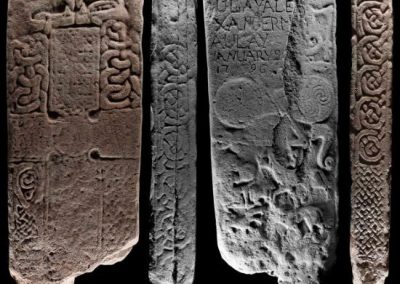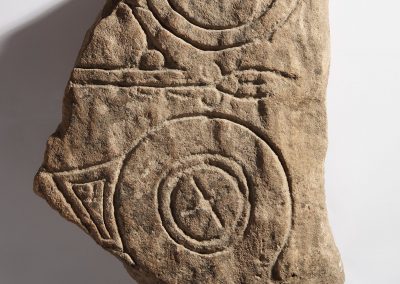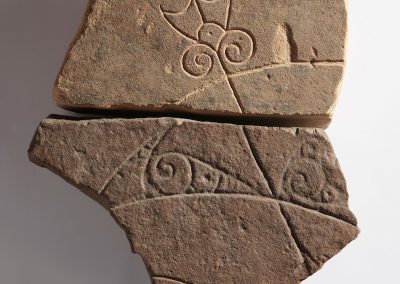Highland Pictish stones
A short introduction
Ro-ràdh goirid
The most visible legacy of the Picts are the enigmatic carved stones which you can see either still standing in the Highland landscape or else in local museums and heritage centres.
As you tour the Highland Pictish Trail and see the different stones along the route, you may well start wondering what they can tell us about Pictish life and culture in the Highlands. Who were the people who carved them, who commissioned them, what effects were they intended to have on the people who saw them? Did the earlier stones tell stories of kings, tribes and battles or reinforce messages of power? Were the later ones perhaps the focus of Christian outdoor worship or a reminder of the power and importance of the Christian Church?
We may never know the answer to these questions but we can say that new research is casting fresh light on the Picts and the debate on the role and meaning of the stones can be very lively. At the bottom of this article, you will find links if you want to do some research of your own – and maybe even join in the debate!
Different kinds of stones
Diofar sheòrsaichean chlachan
Pictish stones have traditionally been described within a classification structure first devised in the late 1800s. Although the system has weaknesses, it is still a useful way of broadly identifying the types of carved stones you will come across on the Highland Pictish Trail.
- Class I stones – these are unshaped boulders or stone slabs with symbols incised on to them. They do not have crosses. Examples include the The Ardjachie Stone at Tain and District Museum, and the Knocknagael Boarstone in Inverness .
- Class II stones – these are stones which have been prepared (“dressed”) into rectangular shapes and they are carved in relief, and there is always a cross on one face and paired symbols on the other. Additional sculpture may include complex geometric patterns or biblical, battle or hunting scenes. The Conan Stone at Dingwall Museum is an excellent example.
- Class III stones are Christian monuments with no symbols. Some only have a Christian cross like the Farr Stone at Strathnaver Museum. Others include carvings such as the impressive riders on horseback on the Edderton Stone.
Pictish symbols
Samhlaidhean Cruithneach
Many of the symbols on Class I and Class II stones are unique to Pictish areas. Some are geometric (such as ‘V-rods’, ‘double disc and Z-rods’ and ‘crescents’ while others are recognisable representations of animals such as wolves, stags, eagles and fish. (The “Pictish beast’ is less recognisable, with theories that it may represent a sea monster or even a dolphin.) On complete stones such as The Eagle Stone, The Gairloch Stone and The Skinnet Stone, they are almost always arranged in pairs. There are many theories as to what the symbols meant – some experts think that they record or commemorate names, tribes, marriages or other alliances but there are also other theories.
Christian influence
Buaidh Chrìosdail
The introduction of Christianity to the Picts brought new images and themes to Pictish stones and much of the superb artistic craftsmanship we associate with the Picts was inspired by Christian belief, with The Rosemarkie Stone at Groam House Museum and The Ballachly Stone at Dunbeath Heritage Centre being good examples. There are also stones which show elaborate scenes of human and animal figures such as on The Shandwick Stone, or biblical stories and scenes like the magnificent Nigg Stone which shows the story of St Paul and St Anthony in the desert being brought holy bread by a raven. The designs on these stones are very similar to designs seen on illustrated manuscripts being produced at the time such as the Book of Kells or the Lindisfarne Gospels, and show that the Picts in the Highlands had strong cultural and artistic links with other parts of Britain and, indeed, Europe.
A colourful past?
Àm dathach a dh’fhalbh?
Although Pictish stones are now bare stone, some researchers believe that they may have been painted with vibrant colours in Pictish times which over time was washed off by the Highland elements. Imagine stones like The Nigg Stone or The Shandwick Stone in colour – they would have been even more spectacular!
Stones with stories
Clachan le sgeulachdan
In the times since the Picts, some of the stones on the Trail have been re-used then rescued, some have been lost then found (in whole or in part), some have acquired local traditions or stories, some have been moved to new locations, and a few have become the subject of heated debate as to where they should be kept. You can discover their individual stories by reading their listings on this website. The fabulous Conan Stone is the most recent stone to have been discovered – click on the link to find out how local volunteers found it and organised for it to be conserved and put on display.
Search for a stone
Lorg clach
If you know the name of a specific Pictish carved stone and would like to find out where to see it, just enter the name in the box below. Alternatively, click here to see a complete list of named stones on the Trail and where you can see them (correct as of 23/03/2021). Highland Pictish Trail – list of stones by site
Find out more
Faigh tuilleadh a-mach
Pictish Symbol Stones – An Illustrated Gazetteer
Royal Commission on Ancient and
Historical Monuments of Scotland
The Art of the Picts: Sculpture and Metalwork in Early Medieval Scotland
by George and Isabel Henderson,
Thames and Hudson
The Pictish Symbol Stones of Scotland
edited by Ian Fraser,
Historic Environment Scotland
The Picts including guides to St Vigeans Museum and Meigle Museum
by Jill Harden,
Historic Scotland
The Stones of the Pictish Peninsulas
The King in the North: The Pictish Realms of Fortriu and Ce
by Gordon Noble and
Nicholas Evans, Birlinn
Pictish Arts Society
The website includes an index to the many articles about Pictish stones which have appeared in the Society’s newsletters.
BBC Scotland Article
stones may have looked if painted.
SCARF - Hilton of Cadboll
Interesting article looking at the cultural significance of the
Hilton of Cadboll Stone from Pictish times to the present day

